Our Blog - Salzburg, France
After our less-than-wonderful Christmas Market experience last year, we decided that we would somewhere that we were guaranteed a great Christmas Market. We decided on Salzburg, Austria, even though there were no direct flights (we are a bit spoiled!). Salzburg is the 4th largest city in Austria with just over 150,000 people and is home to 3 universities. It is probably best known as the birthplace of Mozart (in 1756) and the setting for the film "Sound of Music". The name comes from Salz (meaning salt) and Burg (meaning fortress), a reference to the salt production and the tax that had to be paid on the transportation of that salt on the river in the 8th century.
But long before that, there was a Roman settlement here called Iuvavum. The town of Salzburg was founded as an episcopal see in 696 and became a seat of the archbishop in 798. Its main sources of income were salt extraction, trade, as well as gold mining. The fortress of Hohensalzburg, one of the largest medieval fortresses in Europe, dates from the 11th century. In the 17th century, Salzburg became a center of the Counter-Reformation, with monasteries and numerous Baroque churches built. During the Nazi occupation, a Romani camp was built in Salzburg-Maxglan. It was an Arbeitserziehungslager (work 'education' camp), which provided slave labor to local industry. It also operated as a Zwischenlager (transit camp), holding Roma before their deportation to German camps or ghettos in German-occupied territories in eastern Europe.
The trip started out a bit rocky, with our connecting flight from Frankfurt to Salzburg being cancelled the day before the flight due to continuing problems in Munich due to heavy snowfall. I tried the Lufthansa app and their "bot" to reschedule, but the only options they gave were to fly from Toulouse to Munich (where all the snow-related problems were) and then to Frankfurt (WHY WHY WHY add another stop when our Toulouse to Frankfurt flight was just fine) and then a later flight into Salzburg. Umm .... NO! After trying unsuccessfully a couple times to reschedule on the phone ... did I also mention they were having IT problems and most of their systems were down? .... We finally got the last 2 seats on another flight that got into Salzburg a couple hours later than we had originally planned. No problems with those flights, and got a nice view of the surrounding mountains on the way in. From there, we grabbed a bus and headed towards the old town.
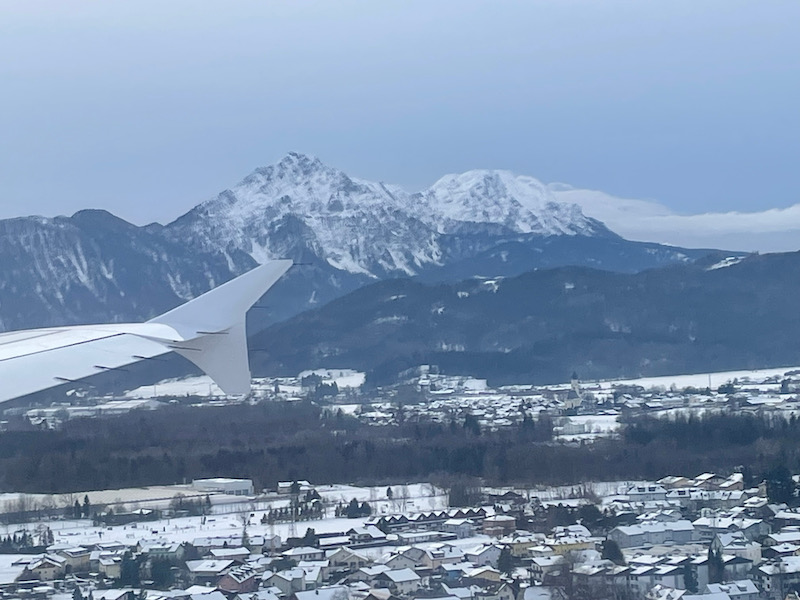
Due to coming in a couple hours late, we got off the bus a few stop early and went directly to a piano concert that we had booked in advance. It actually was a harpsichord concert, which was quite interesting, with the instrument being a copy of one from the 1700's. The pianist took time to explain the instrument, which has 2 different keyboards, and uses a mechanism to "pluck" the string (or strings). This is a bit different than modern piano, which uses a hammer to "hit" the strings. She also explained that the top keyboard could be moved to "couple" it to the lower keyboard, which means that when she hit the key on the lower keyboard, the coupled key on the top keyboard also would play automatically. This gave multiple different sounds, which she gave a demonstration of. You will also note that there are no peddles here.
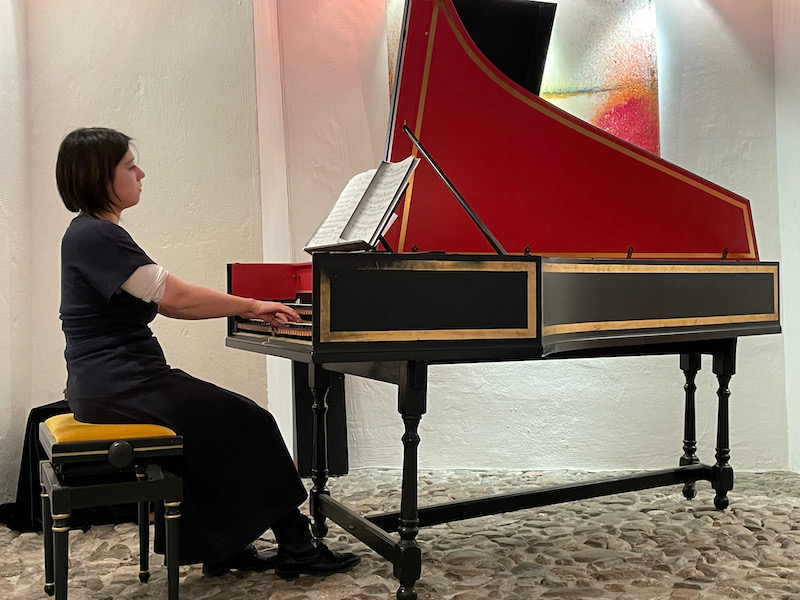
In the first video of the concert, she is only playing the lower keyboard. At other times, she would jump up and play the top keyboard, and a few times, she played one with each hand.
If you look closely at the top keyboard, you can see it in the "coupled" format, where she is only hitting the keys on the bottom keyboard but you can see the keys on the upper keyboard moving as well. You can also tell a difference in the sound.
We spent several days there and ended up going to the churches within this blog on different days and at different times. Then I picked the best pictures, so the pictures for a given place may be from different days/times.
I took a few pictures at night from around the river and at the Christmas markets. I say markets plural because there were several around town ... one in the square in front of the Duomo, one in the square next door (the Residenzplatz), one near the Mirabell palace, and one up at the fortress. I'm sure there were a few more as well, but those were the main ones that we stopped by. I also forgot to mention that the famous Sacher torte, a chocolate cake, is sold at the Hotel Sacher (in both Vienna and Salzburg). You can also see the fortress up on the hill.
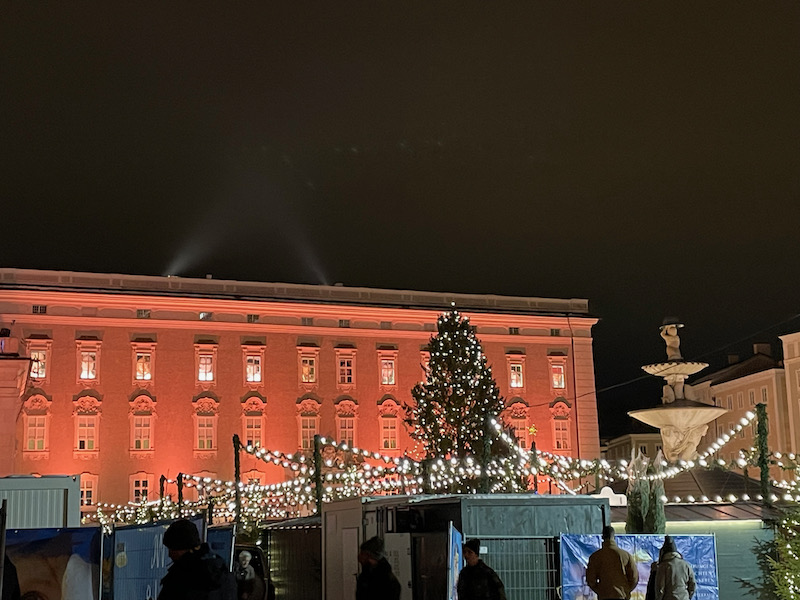
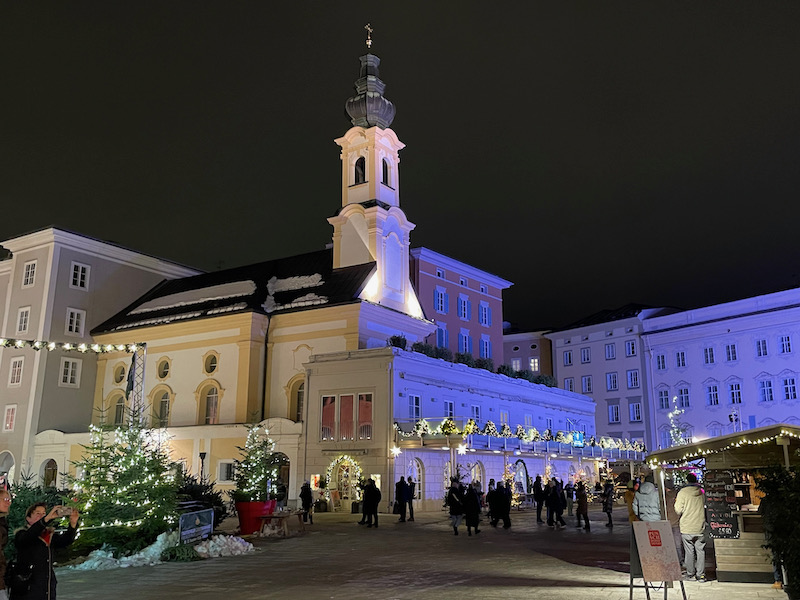
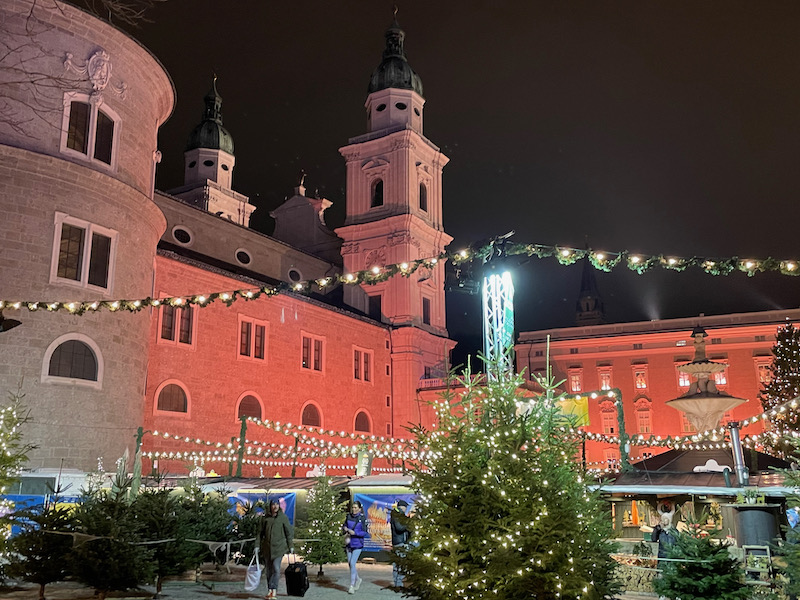
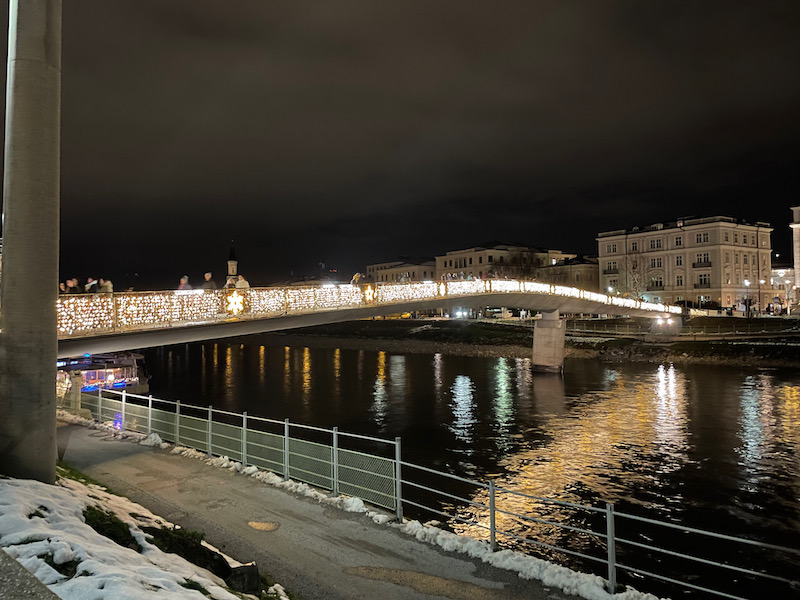
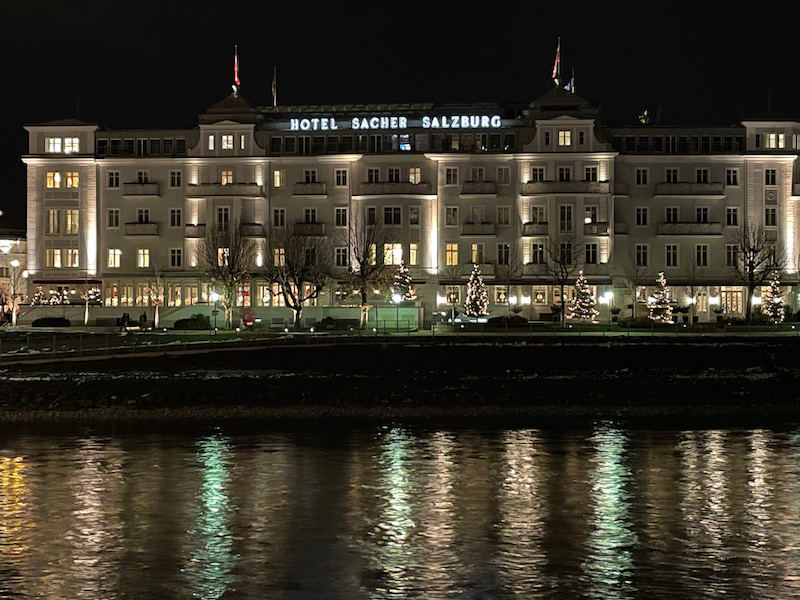
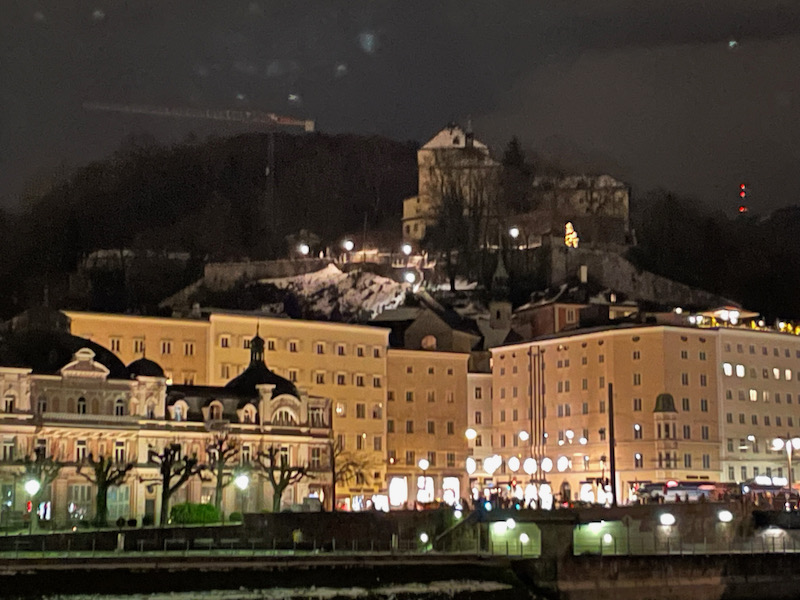
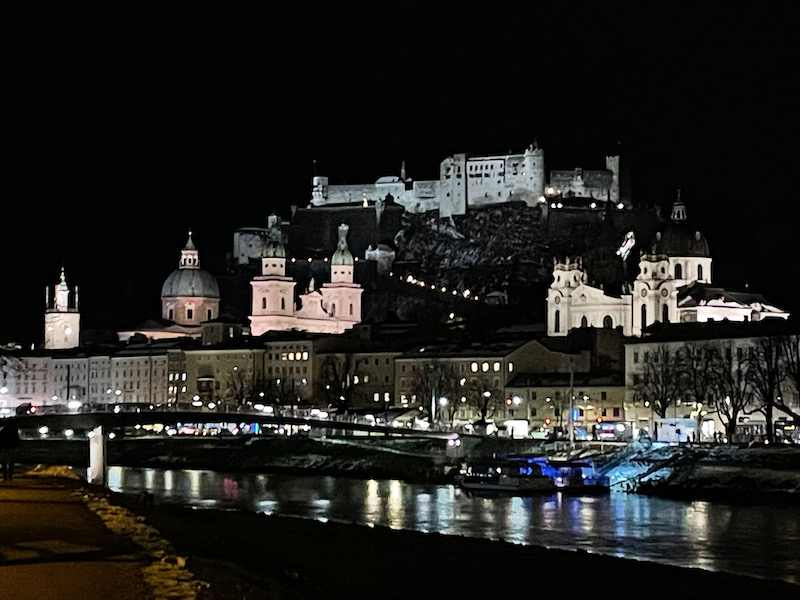
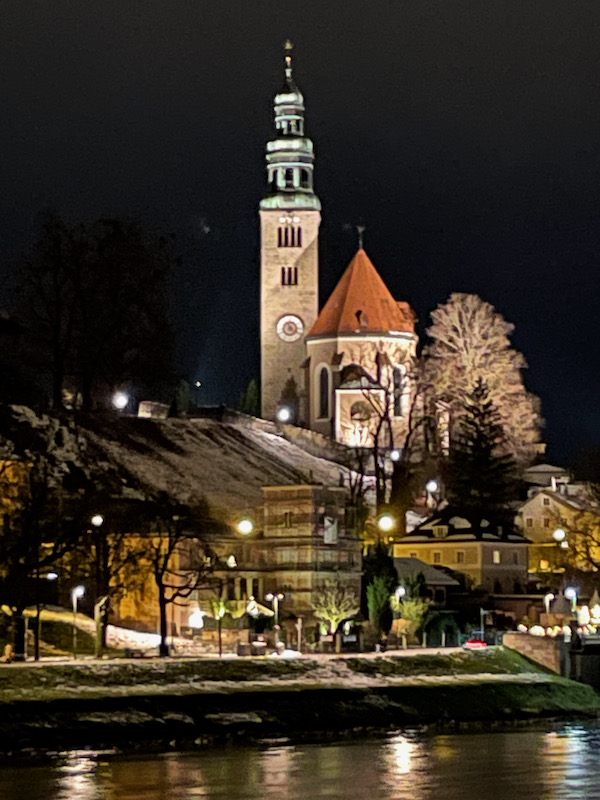
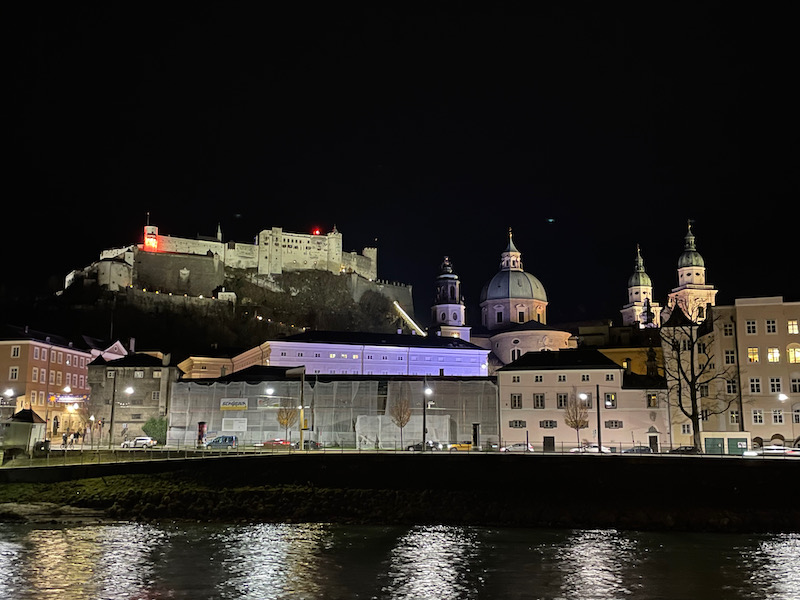
Santa was also found.... but on the back of a big black dog, not in a sleigh.
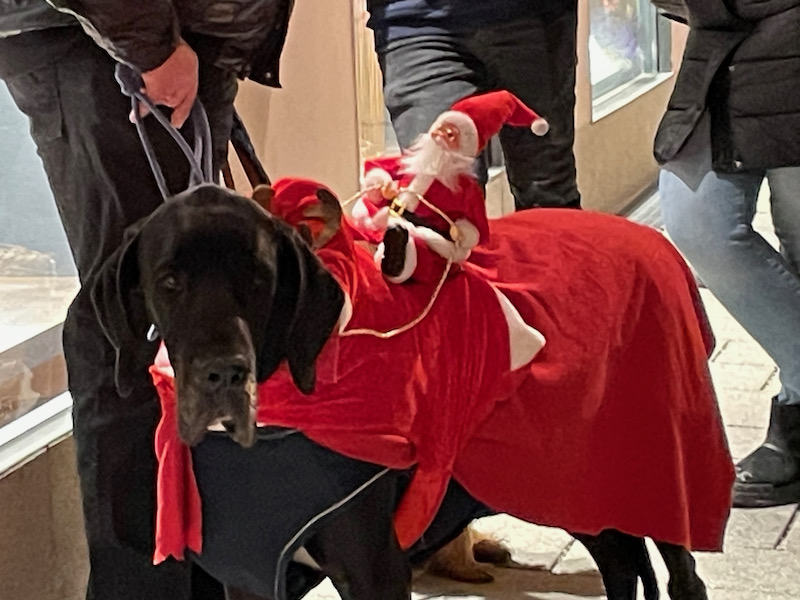
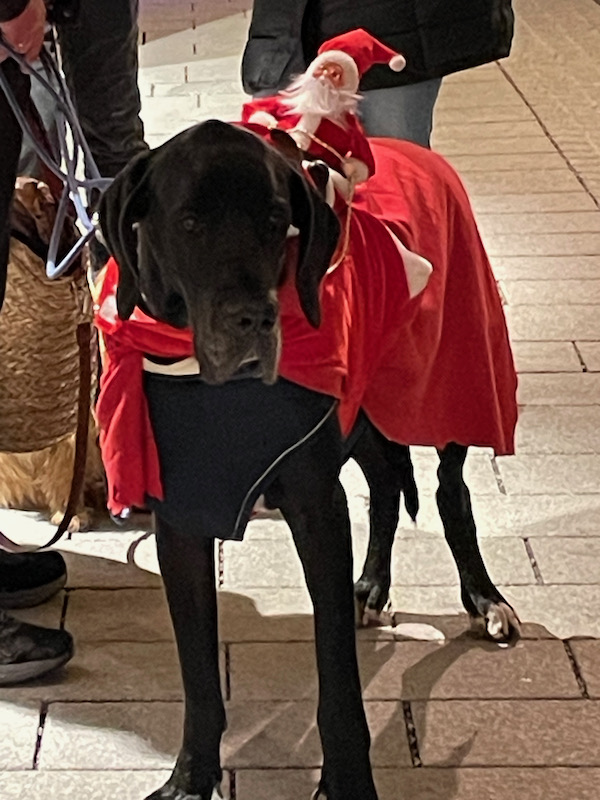
Throughout town, there was a modern art exhibition with different pieces in different places. This one is called Caldera, which is a large sculpture made of patinated bronze. Within its structures, the viewer can discern human outlines, which, depending on location and perspective, suddenly appear, interact spatially and then vanish just as quickly.
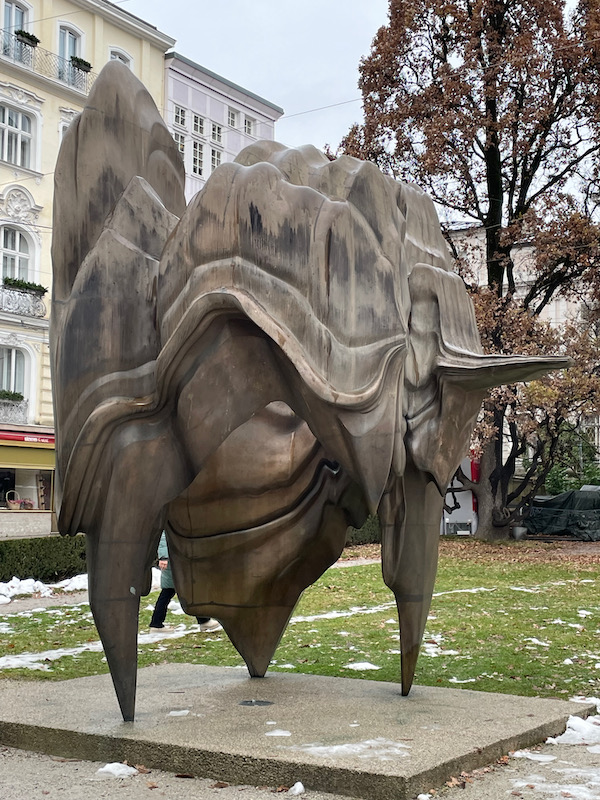
A couple of the Christmas markets during the day, along with pretzels ... not just any pretzels, but Salzburger Brezen. Here it isn't just the normal pretzel with salt, or with cheese ... but they have 8 different kinds including the Mozart Brezen (a chocolate jam pretzel)!
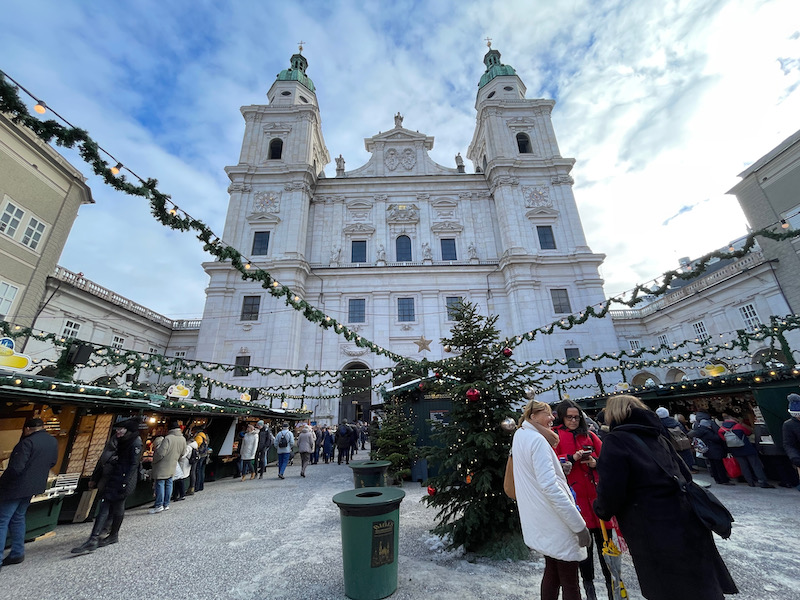
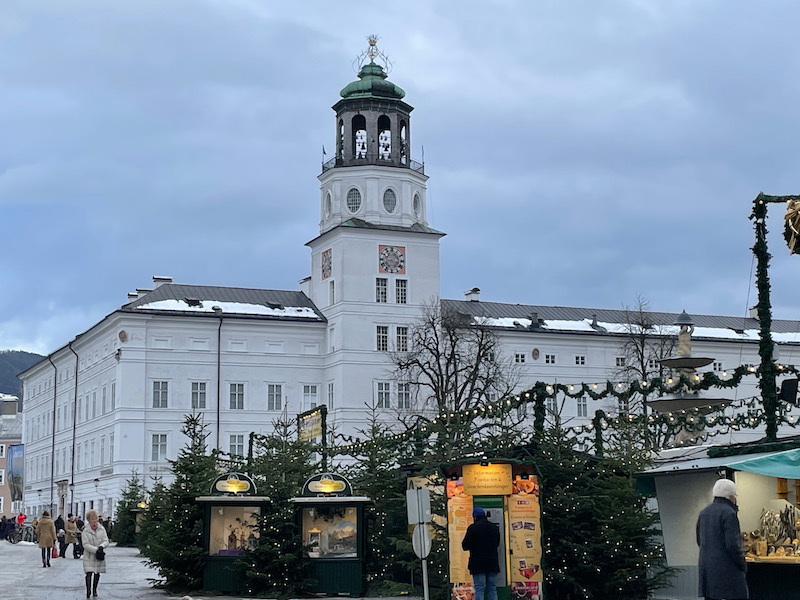
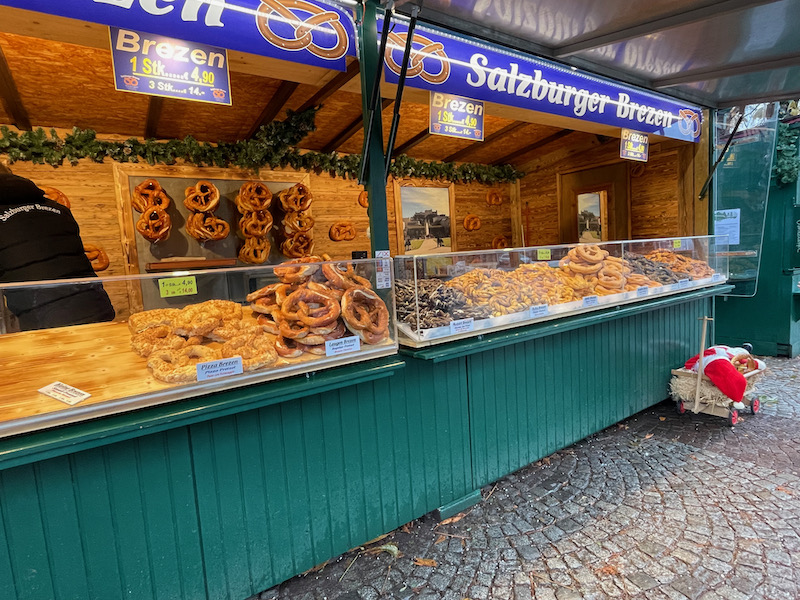
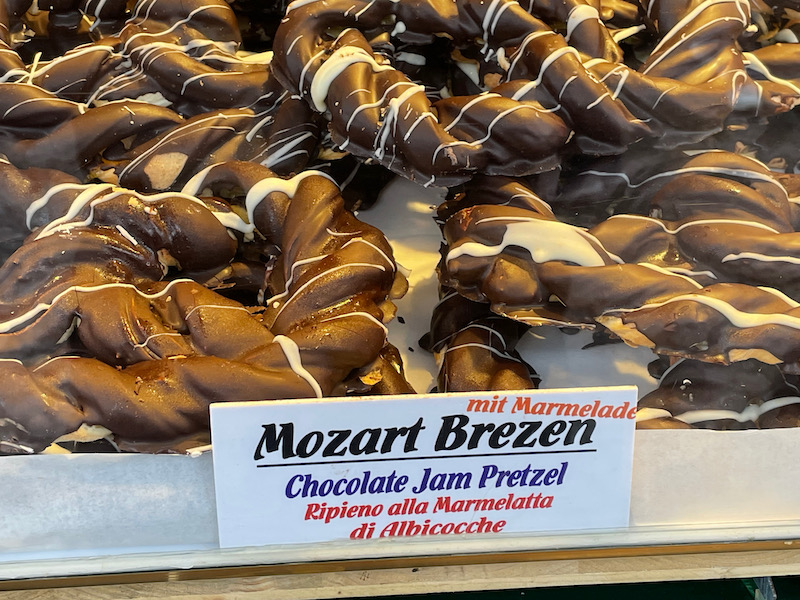
There is a Capuchin Monastery (Kapuzinerkloster) up on top of a hill, surrounded by a wall with little towers. In the Middle Ages, a fortified tower known as the “Trompeterschlösschen” was located on the hill. When Prince-Archbishop Wolf Dietric von Raitenau brought the Capuchins to Salzburg in 1594, he decided to transform this tower into a monastery with a church, which would then serve as the future home of the order. You can climb up and visit, but we decided not to. In the 2nd and 3rd pictures, I am showing the wall and towers, not the big building at the bottom.
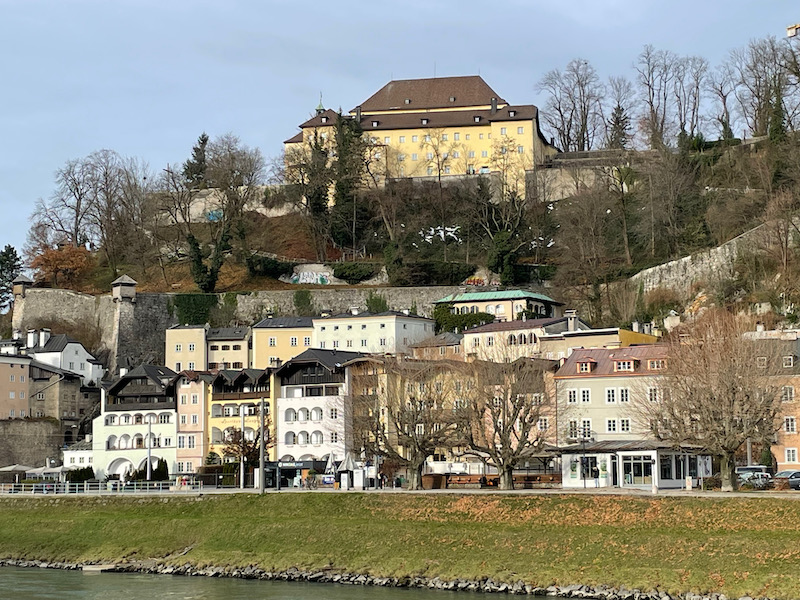
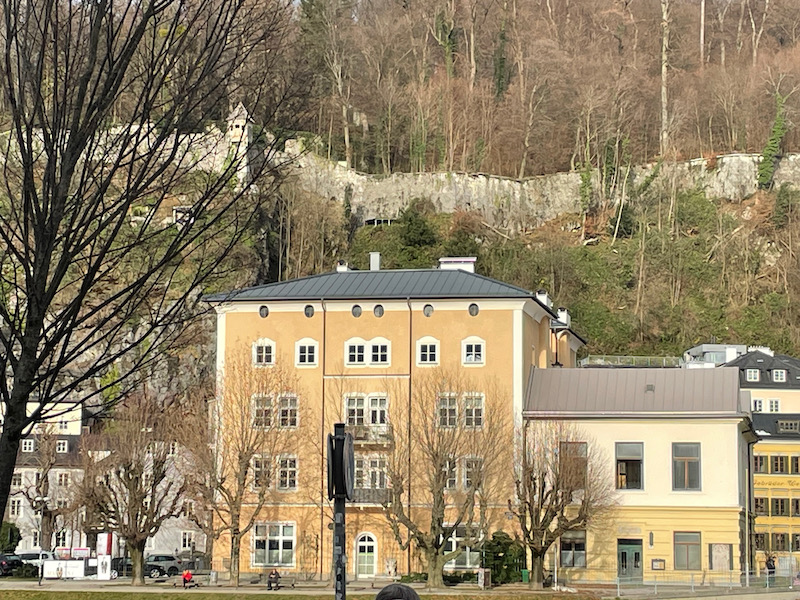
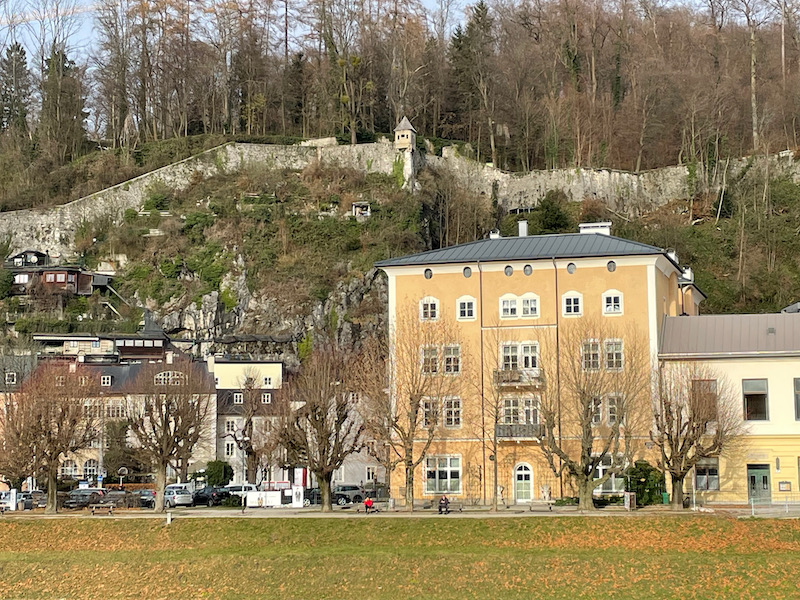
One of the main sights of the city is the Salzburg Cathedral, or Duomo. The first cathedral here was built by Saint Vergilius around 774. Like most churches in Europe, that building doesn't exist anymore. In 842, it burned down due to a lightning strike and rebuilt. Between then and around 1600, it was modified multiple times into a Romanesque basilica. It then was damaged and, unable to successfully restore it, it was demolished. Prince-Bishop Wolf Dietrich Raitenau (Archbishop from 1587 to 1612) brought in an Italian architect to create a new Baroque building, which was completed in 1628.
You will see this with most of the churches in Salzburg ... the exterior is pretty simple, and in some ways, reminds me of some of the buildings in town. There are nice columns and decorations on the facade over the windows, and two bell towers in the front. The façade is divided into three horizontal sections. The lower section has three high round arches or portals that provide access to three bronze doors. The portals are flanked by four large sculpted figures representing the diocesan and cathedral patrons. Here I show the figures of Saint Peter holding keys and Saint Paul holding a sword, sculpted around 1697.
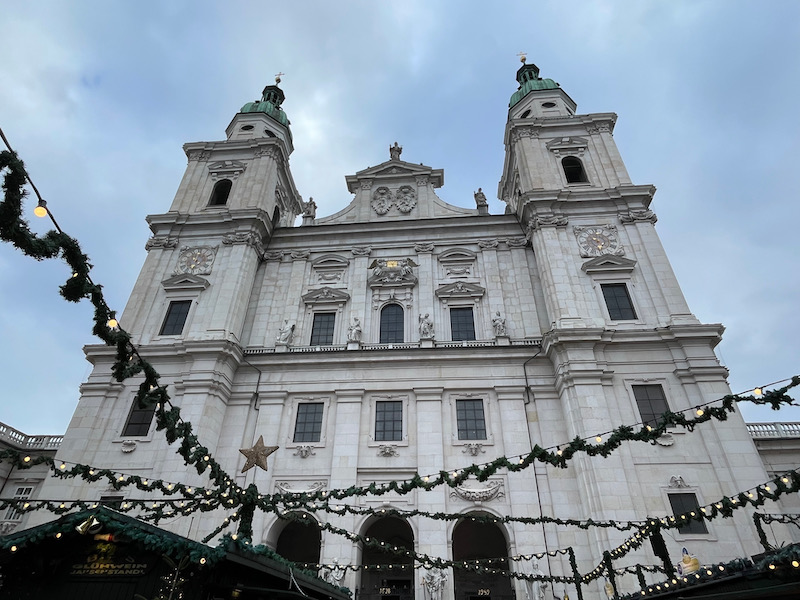
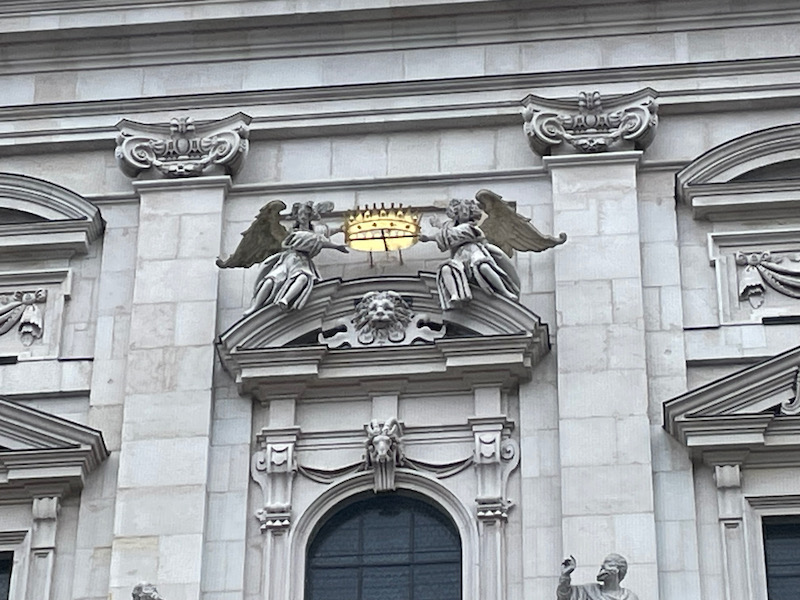
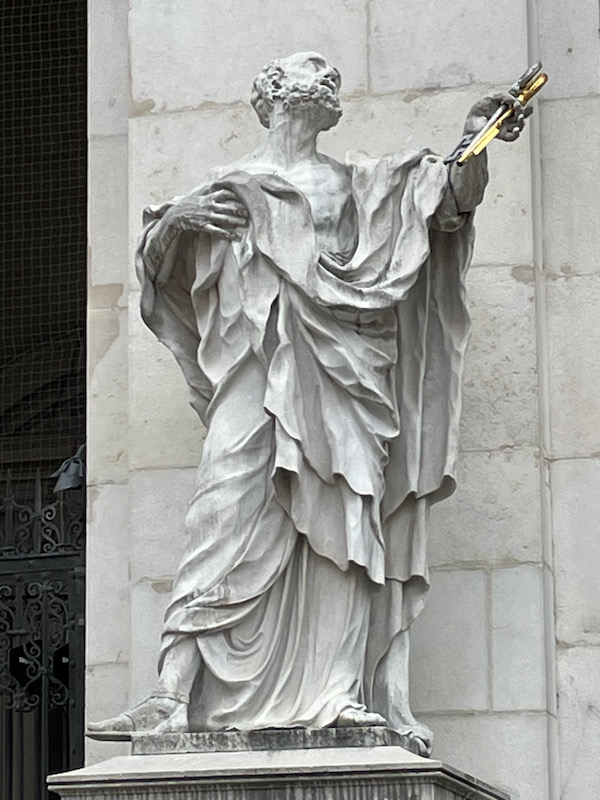
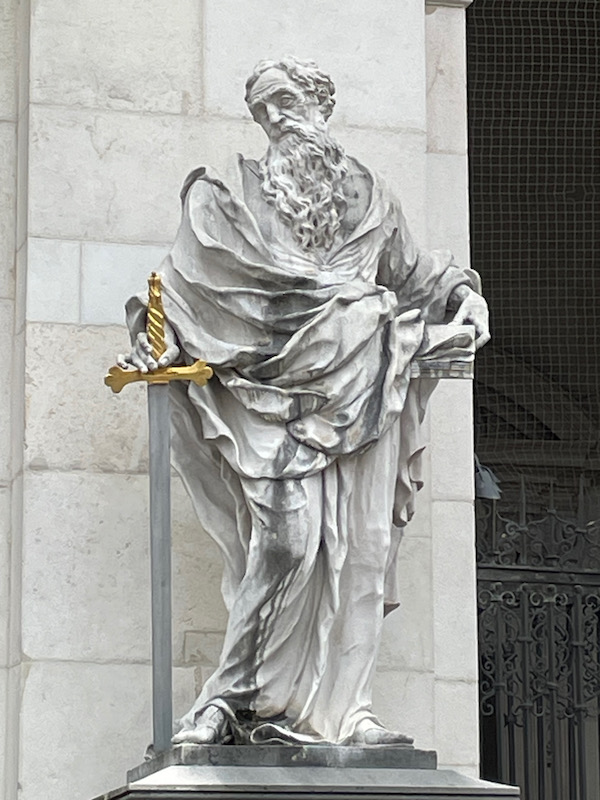
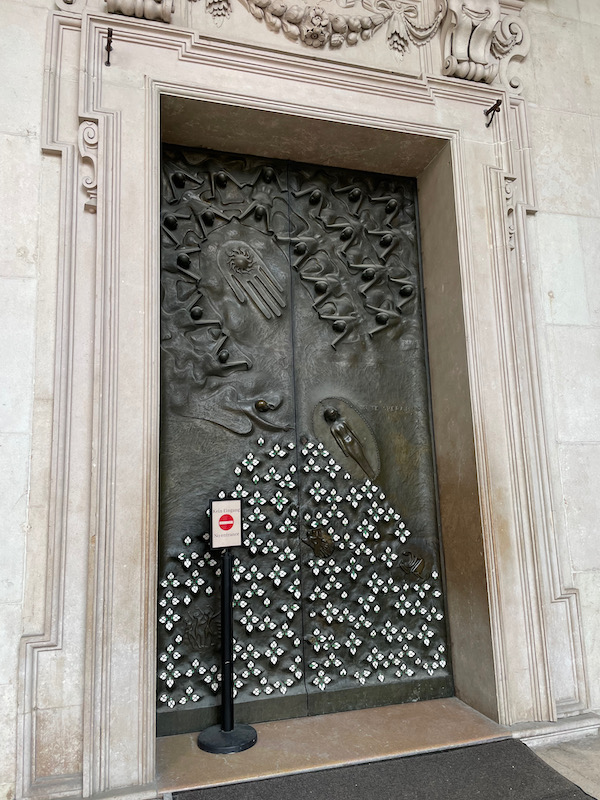
An overview looking down the nave. You can see lots of Romanesque arches along with various domes. There are also balconies above the side arches but I have no idea what those are used for, as it didn't seem to me that there were rooms behind those. Most of the interior is white or off-white, with pops of color with the various paintings. Lots of stucco work, which you'll see more of up-close in other pictures.
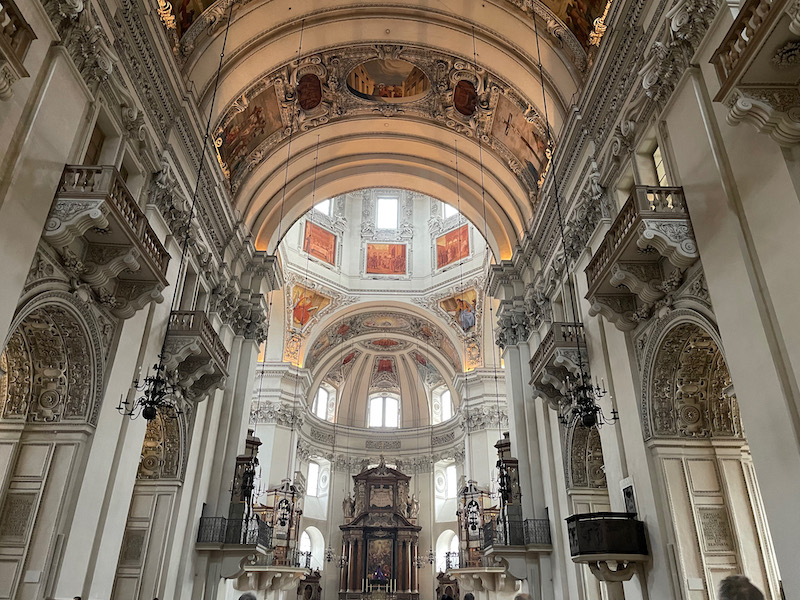
The aisle-side of the wooden pews are carved with alternating eagles and unicorns. The last pews have carved backs with lions and eagles.
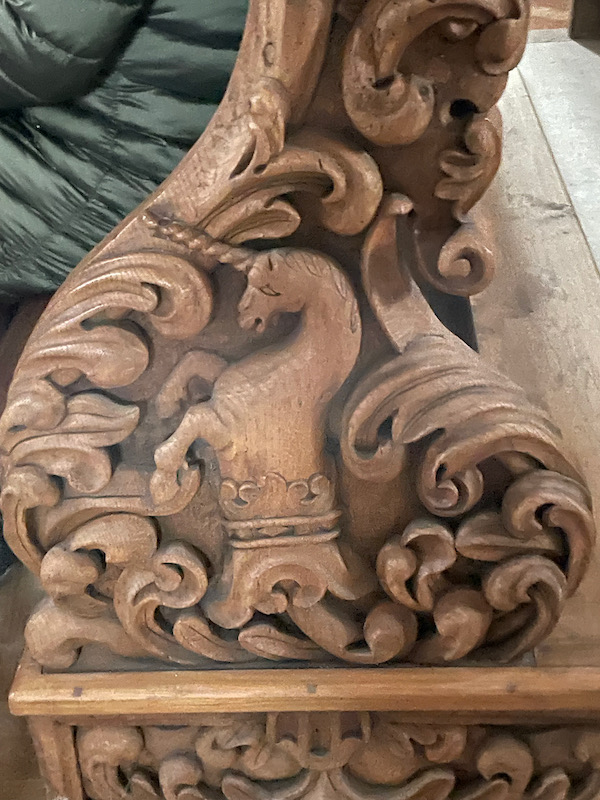
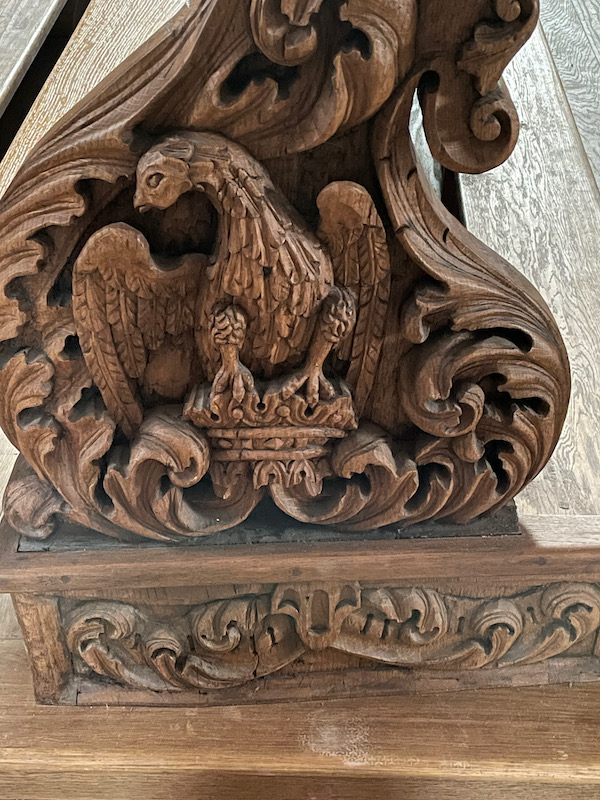
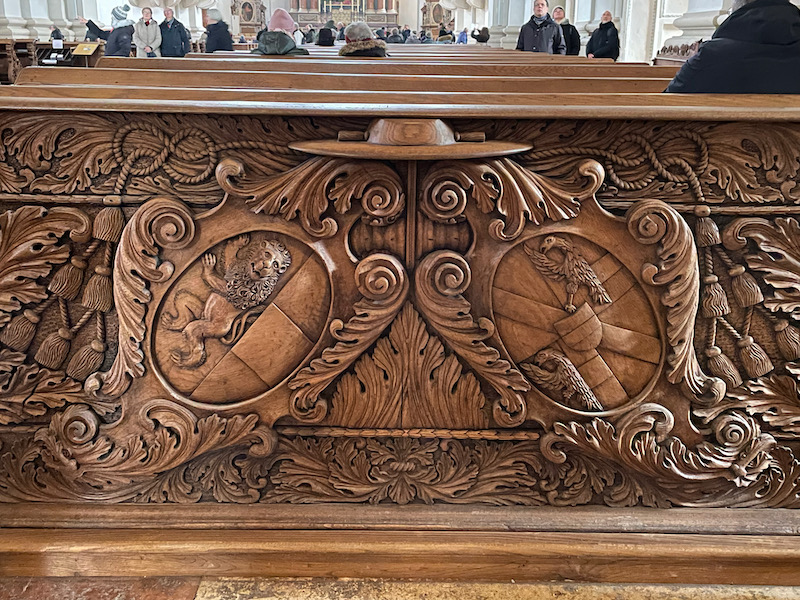
This is an example of the vaults in the side aisle chapels .. each chapel on the north side and south side has a unique set of paintings, but the design is identical. At first glance, it might be hard to see what makes these stucco works so special, but take a closer look and you’ll notice that the contours have been emphasized with gray paint, giving them a stunning three-dimensional appearance.
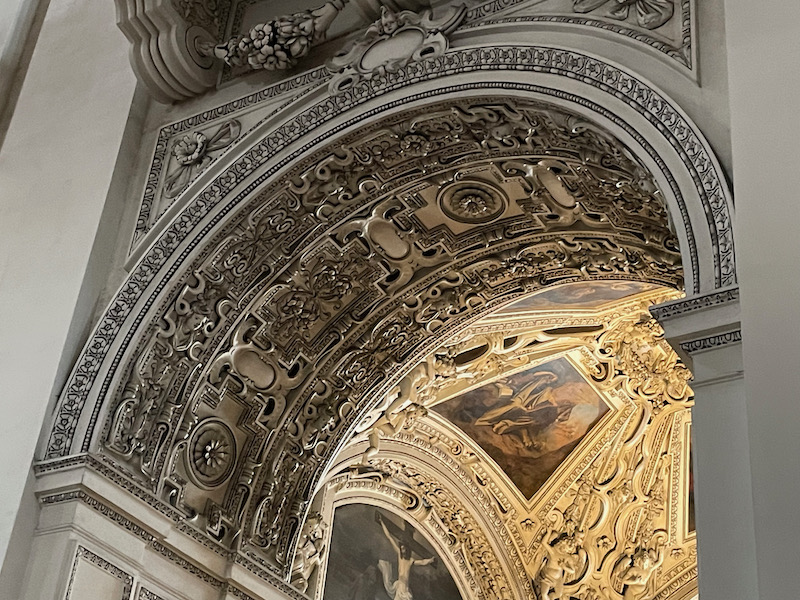
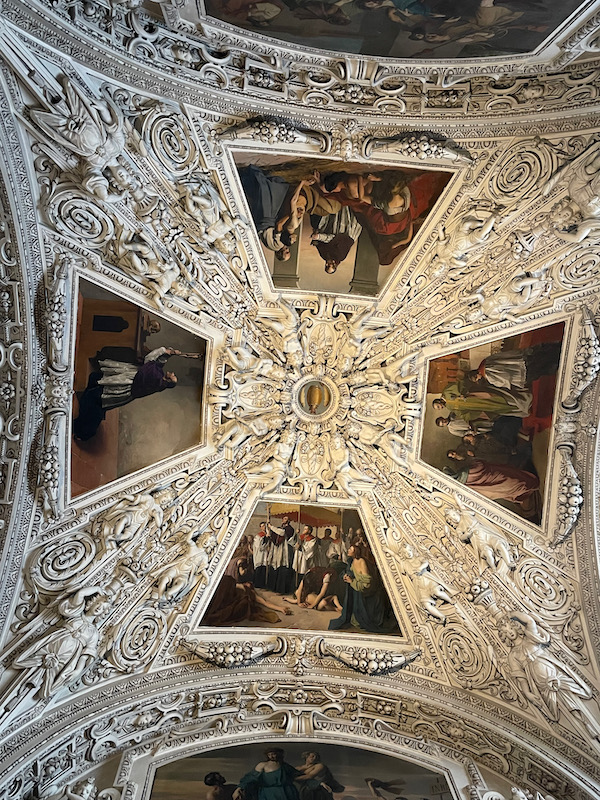
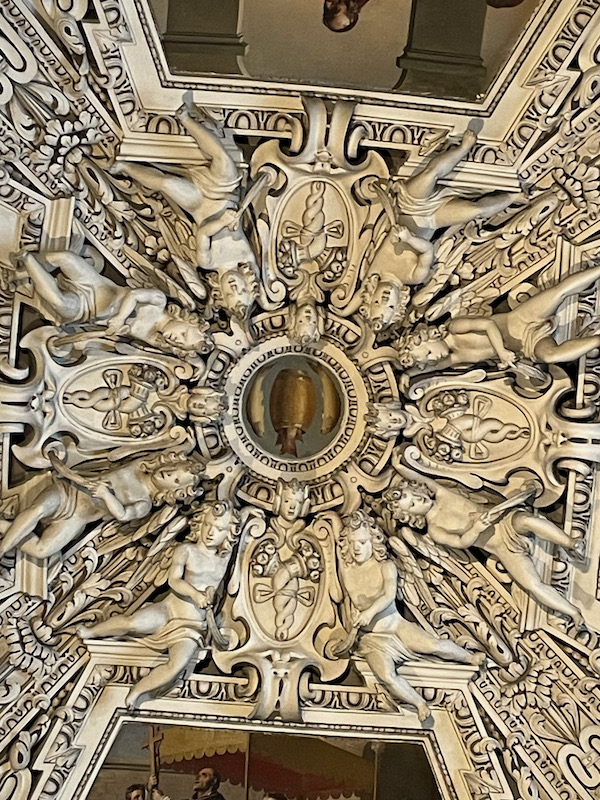
There are several altarpieces throughout the Cathedral, most of them have a similar style. There are also several burial altarpieces for various bishops and abbots.
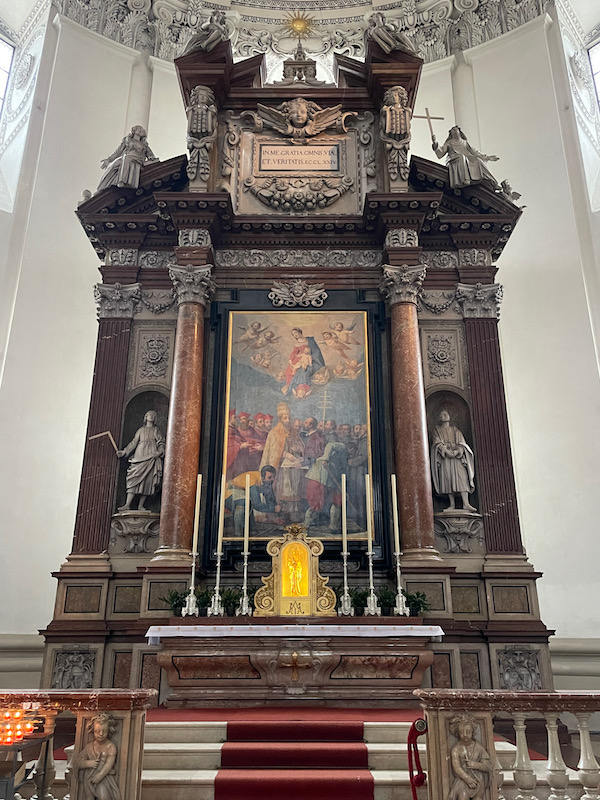
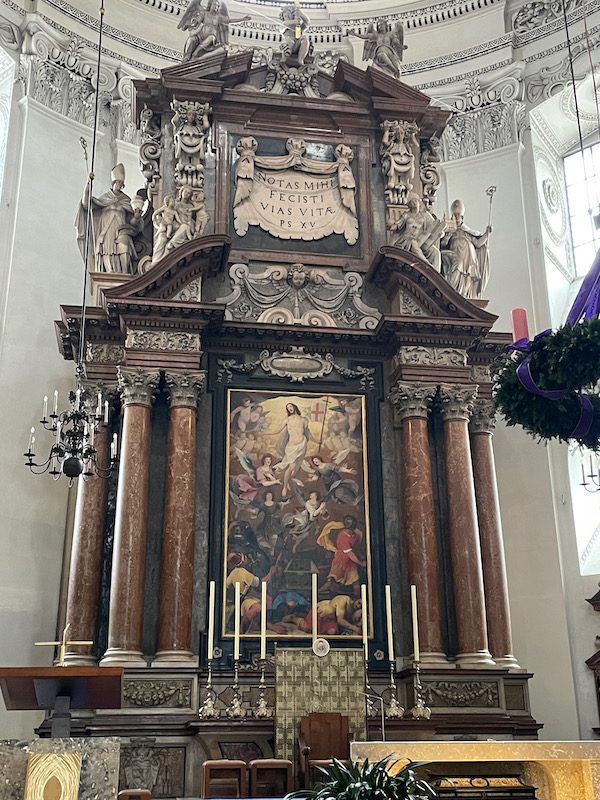
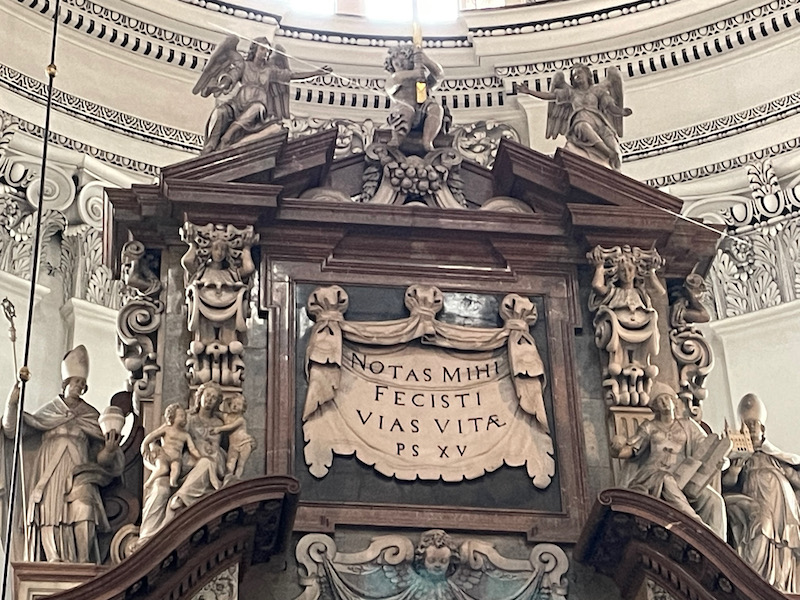
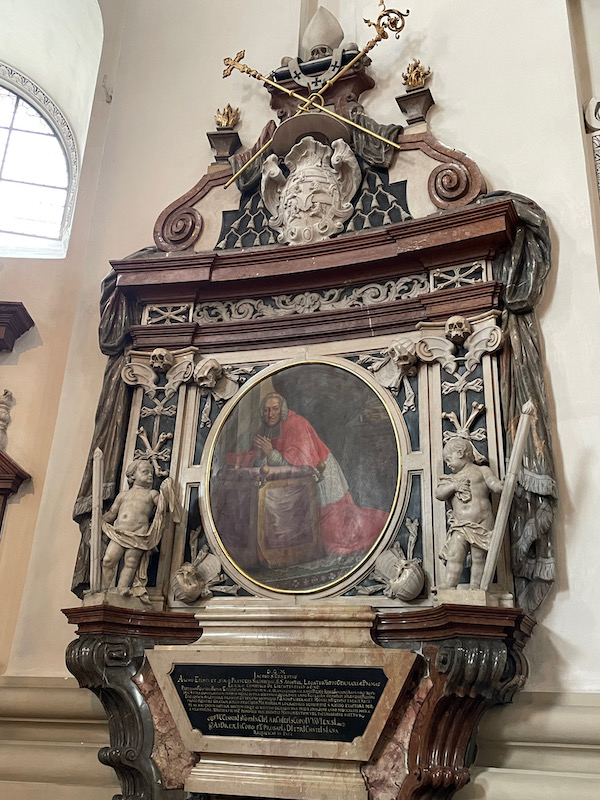
The stucco-work on the ceilings of the nave and domes are pretty amazing. The ceiling of the nave is covered with paintings depicting scenes from the life and passion of Christ. There are 15 large images with the suffering of Christ up to the crucifixion and then 10 smaller horizontal pictures with other excerpts from his life.
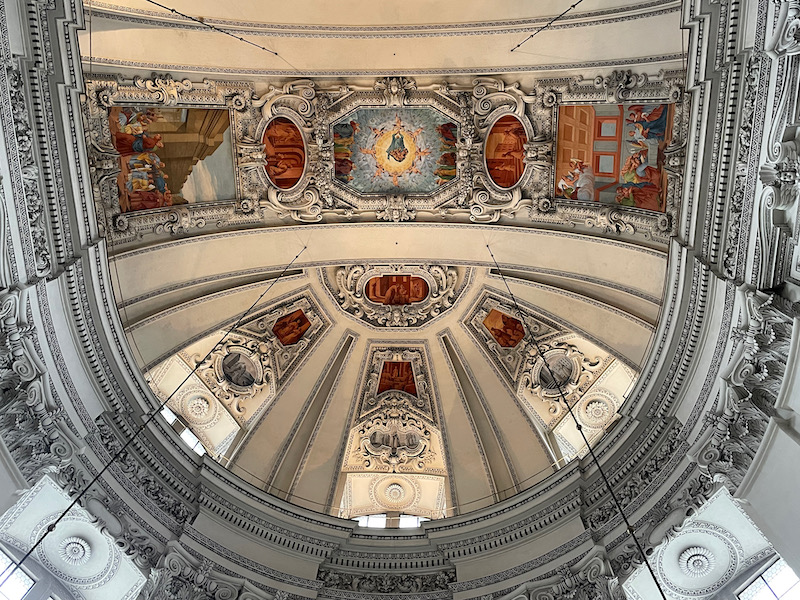
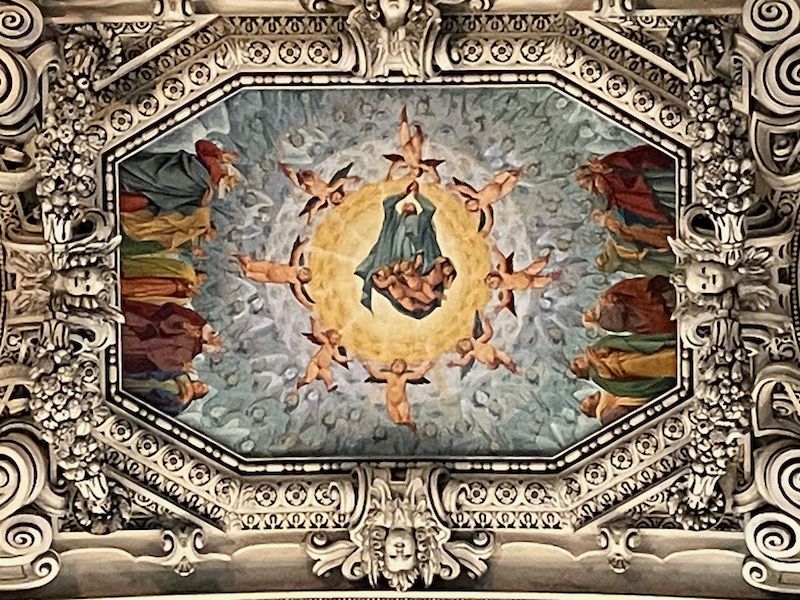
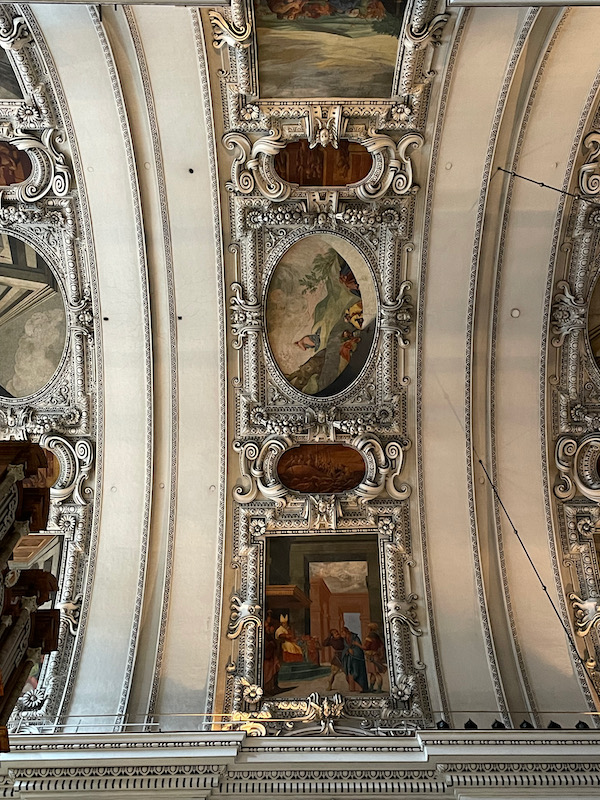
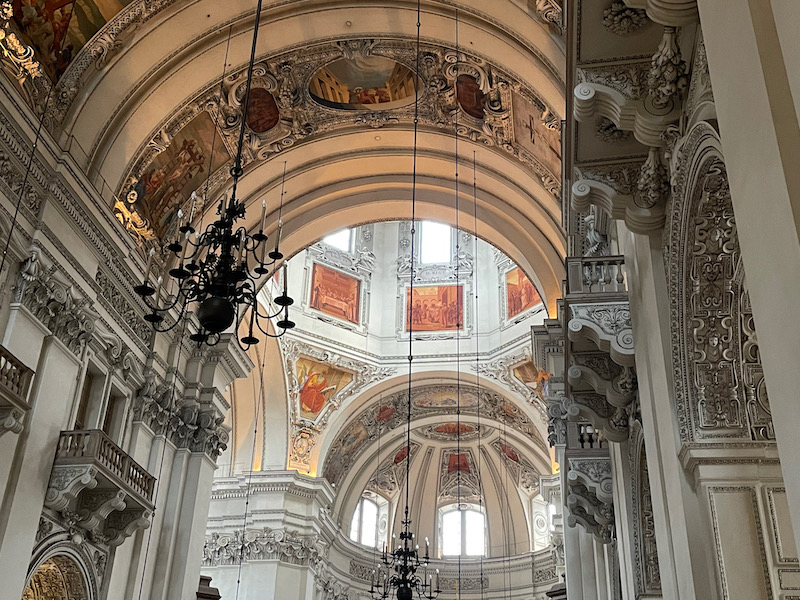
I tried to do a video going around the apse to try to give a better view of the apse and sides ... pictures sometimes don't really capture it well.
One of the few surviving relics from the previous basilica is a 14th century Gothic baptismal font. This is actually the font that composer Wolfgang Amadeus Mozart was baptized in (1756). It is cast in pewter and, according to the inscription, it was created by Master Heinrich in 1321. The Romanesque bronze lions on which the baptismal font rests date back to the second half of the 12th century. The inscription on the upper edge of the pool reads (translated): "I am a vessel made of brass. I erase sins. Through me, true cleansing takes place in the holy bath. What is in the bath is completely cleansed baptism. Master Heinrich created me in the Lord's Day 1321"). Around the sides are 16 bas-reliefs that depict various saints, bishops, and abbots of Salzburg. The lid is NOT original, dating to 1959, and shows 12 Old and New Testament motifs for baptismal symbolism.
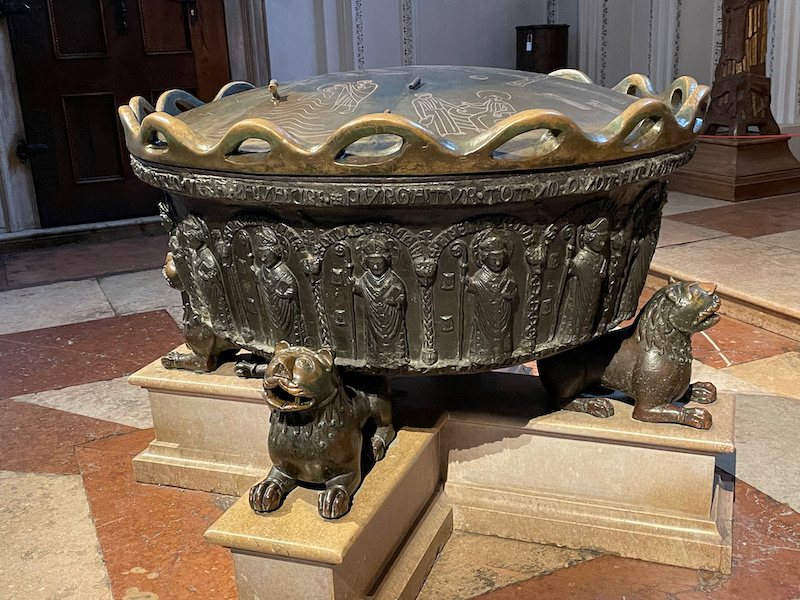
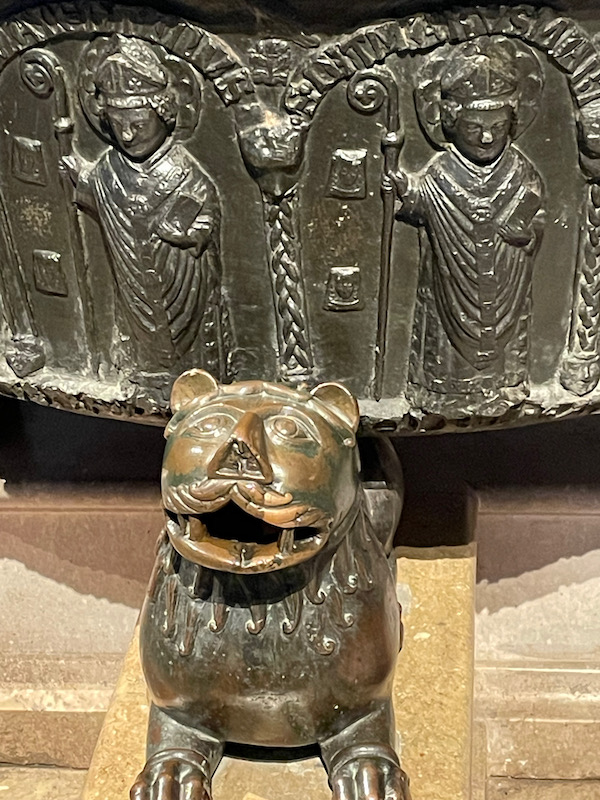
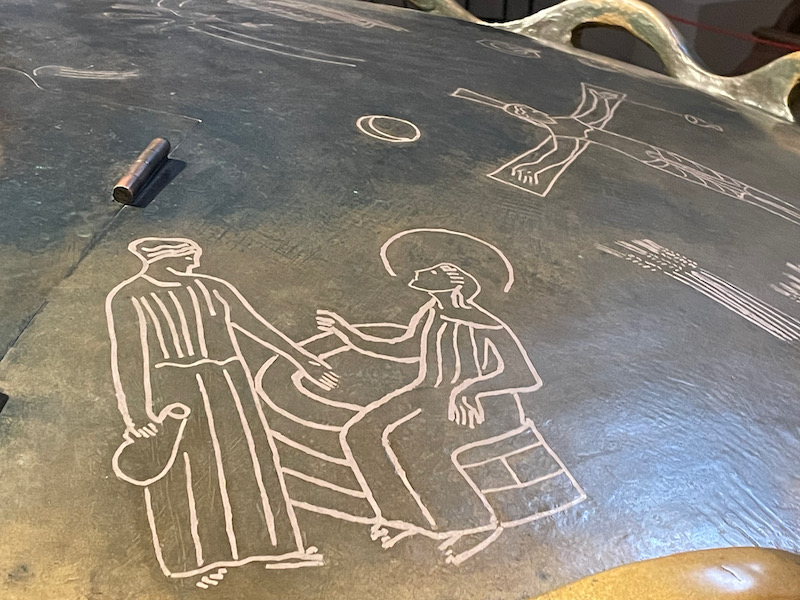
The Salzburg Cathedral was damaged in 1944 during World War II when a single bomb crashed through the central dome over the crossing. Repairs were somewhat slow to take place, but restoration was complete by 1959. They had pictures of the damage.
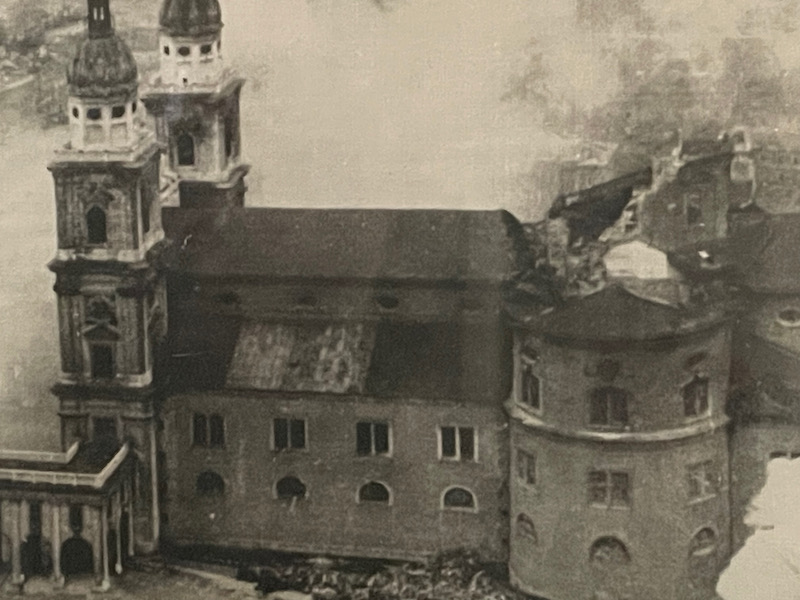
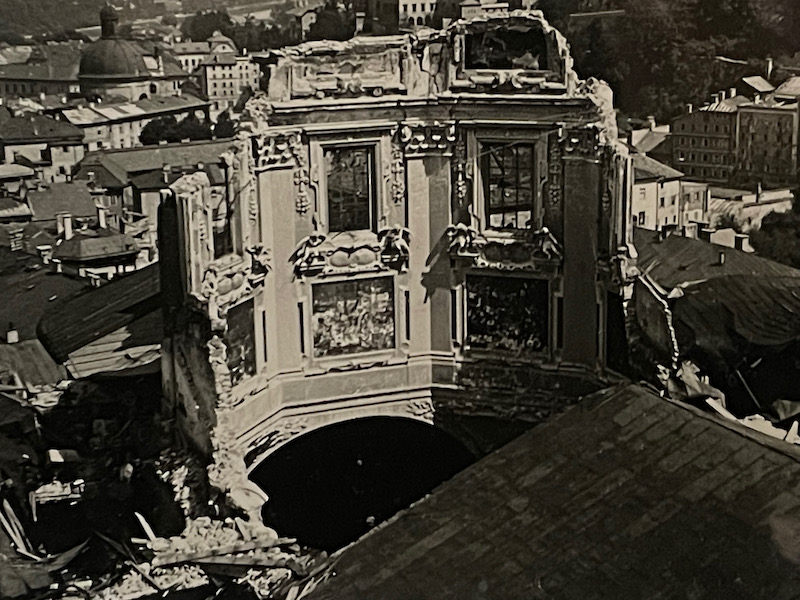
Continue on to to the next page of the blog (too many pictures so I broke it into 3 pieces).